The world of a private chef is a captivating blend of culinary artistry and personalized service. Behind the scenes, these culinary professionals orchestrate a symphony of flavors, textures, and aromas, tailored to the unique tastes and preferences of their clients.
From meticulously planning menus to executing exquisite dishes, a day in the life of a private chef is a whirlwind of creativity, passion, and dedication. Let’s step into their shoes and explore the intricacies of their daily routine.
Key Points:
- Private chefs blend culinary artistry with personalized service to craft bespoke dining experiences.
- Morning preparation involves sourcing the freshest ingredients and organizing the kitchen for the day ahead.
- Menu planning and execution showcase the chef’s creativity and mastery of flavors.
- Client interaction is paramount, with chefs communicating closely to meet individual preferences and dietary needs.
- Flexibility and adaptability are essential qualities as chefs navigate challenges and unexpected changes.
- Continuous learning and growth drive private chefs to innovate and elevate their cuisine.
An Overview of A Day in the Life of a Private Chef Culinary Creativity and Client Care

A private chef’s day is a symphony of flavors, artfully orchestrated to delight the senses and exceed the expectations of discerning clients. From crafting exquisite dishes to nurturing relationships built on trust and personalization, this profession demands a unique blend of culinary prowess and attentive client care.
Morning Preparation:
The day typically begins early for a private chef, as they meticulously plan and prepare for the culinary journey ahead. Before the sun rises, they scour local markets and specialty stores for the freshest ingredients, hand-selecting each item with precision and care. Whether it’s vibrant produce, succulent seafood, or prime cuts of meat, every ingredient is chosen with the utmost attention to quality and seasonality.
Back in the kitchen, the chef begins the day by organizing their workspace and reviewing the day’s menu. They draw inspiration from a diverse array of cuisines, flavors, and cooking techniques, infusing each dish with creativity and flair. With a keen eye for detail, they assemble their tools and ingredients, ready to embark on a culinary adventure that will delight and tantalize the senses.
Menu Planning and Execution:
As the day progresses, the private chef dives into the heart of their craft: menu planning and execution. With a deep understanding of their client’s preferences, dietary restrictions, and nutritional goals, they curate a bespoke menu that reflects both their culinary expertise and their clients’ individual tastes.
From innovative appetizers to decadent desserts, each dish is crafted with precision and passion, showcasing the chef’s mastery of flavors, textures, and presentation. Whether it’s a light and refreshing salad or a hearty main course, the chef balances creativity with practicality, ensuring that each dish is not only delicious meals but also balanced and nutritious.

Client Interaction and Feedback:
Central to the role of a private chef is the cultivation of strong relationships with their clients. Throughout the day, the chef communicates closely with their clients, discussing menu options, accommodating special requests, and providing updates on meal prep.
As the aroma of freshly cooked dishes fills the air, the chef takes pride in presenting each meal with care and attention to detail. They engage with their clients, sharing the inspiration behind each dish and soliciting feedback to ensure that every culinary experience exceeds expectations.
Flexibility and Adaptability:
In the dynamic world of private cheffing, flexibility and adaptability are key attributes. From last-minute menu changes to unexpected dietary restrictions, the chef must navigate challenges with grace and composure, always striving to deliver exceptional personal chef service and culinary excellence.
Whether catering a formal dinner party or preparing a casual family meal, the chef approaches each task with professionalism and creativity, adapting their skills and expertise to meet the unique needs of their clients.
Continuous Learning and Growth:
Behind the scenes, a personal chef is constantly honing their craft, seeking out new ingredients, techniques, and culinary trends to elevate their cuisine to new heights. They invest time and effort in professional development, attending workshops, seminars, and tastings to expand their knowledge and repertoire.
Driven by a passion for food and a commitment to excellence, the chef embraces challenges as opportunities for growth, continuously pushing the boundaries of their creativity and culinary prowess.
What Are the Day to Day Activities of a Chef?

The day-to-day activities of a chef are multifaceted and demanding. Firstly, they meticulously plan menus, considering factors like seasonality, dietary restrictions, and customer preferences. Once menus are established, chefs oversee the procurement of ingredients, ensuring freshness and quality. They also inspect supplies, equipment, and work areas rigorously, maintaining impeccable cleanliness and functionality to meet health and safety standards.
Also, chefs lead kitchen teams, providing guidance and supervision during food preparation and service. Throughout the day, they continually monitor cooking processes, adjusting seasoning and techniques as needed to achieve the desired flavors and textures in each dish. Overall, a chef’s day is a dynamic blend of creativity, organization, and attention to detail.
Why Is It Important for a Chef to Have Creativity?
Creativity is an indispensable role for private chefs, as it enables them to innovate and differentiate their culinary offerings. In the competitive world of gastronomy, creativity sets exceptional chefs apart, allowing them to develop signature dishes and concepts that captivate diners’ palates. A chef’s creative flair infuses excitement and novelty into their menus, enticing patrons to return for new culinary experiences.
Moreover, creativity fosters adaptability, empowering chefs to overcome challenges such as ingredient shortages or evolving culinary trends with inventive solutions. Ultimately, creativity is the cornerstone of culinary excellence, elevating the dining experience and shaping the gastronomic landscape.

In What Ways Can a Chef Be Creative?
A chef’s culinary arts manifest in myriad ways, enriching the culinary world with diverse flavors and techniques. One avenue of creativity lies in menu development, where chefs craft tantalizing combinations of ingredients and presentations to tantalize diners’ senses.
In the kitchen, chefs experiment with novel cooking methods, fusion cuisine, and avant-garde plating styles, pushing boundaries and defying conventions. Furthermore, chefs often collaborate with local producers and artisans, sourcing unique ingredients to inspire inventive dishes that celebrate regional flavors and traditions.
Beyond the kitchen, chefs engage with the community through culinary events, workshops, and collaborations, sharing their passion for food and fostering a culture of innovation and exploration. In essence, a chef’s creativity knows no bounds, continually enriching the culinary landscape with fresh perspectives and unforgettable experiences.

Conclusion:
A day in the life of a private chef is a captivating journey filled with creativity, passion, and dedication. From the early morning hours spent sourcing ingredients to the final flourish of a beautifully plated dish, the chef’s commitment to culinary excellence shines through in every aspect of their work.
Through meticulous planning, thoughtful execution, and attentive client care, private chefs transform ordinary meals into extraordinary culinary experiences, leaving a lasting impression on their clients and reaffirming their status as culinary artisans of the highest caliber.



